125 Years of Serving New Zealand and the Antipodes – Part Two
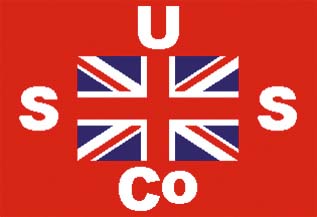
 This second article on the services of USSNZ describes the South Pacific Islands services from both Auckland and Sydney, as well as a Pacific service to San Francisco calling at many of the beautiful South Pacific Islands, and the important Trans Tasman services, the mainstay of the company. The image of the South Sea Islands is one of blue seas, coral reefs and calm lagoons and soft sand, but as with everywhere else, titanic tropical storms of hurricane force can hurl themselves around the vast emptiness of the Pacific, and destroy plantations, ports and towns on the innumerable groups of islands. The USSNZ served the South Pacific islands for over one hundred years, with the onward passenger service to San Francisco lasting until the end of 1936 and the cargo service until the end of 1967, while the Trans Tasman services covered the entire 125 years of USSNZ trading history from 1875 to the Millennium.
This second article on the services of USSNZ describes the South Pacific Islands services from both Auckland and Sydney, as well as a Pacific service to San Francisco calling at many of the beautiful South Pacific Islands, and the important Trans Tasman services, the mainstay of the company. The image of the South Sea Islands is one of blue seas, coral reefs and calm lagoons and soft sand, but as with everywhere else, titanic tropical storms of hurricane force can hurl themselves around the vast emptiness of the Pacific, and destroy plantations, ports and towns on the innumerable groups of islands. The USSNZ served the South Pacific islands for over one hundred years, with the onward passenger service to San Francisco lasting until the end of 1936 and the cargo service until the end of 1967, while the Trans Tasman services covered the entire 125 years of USSNZ trading history from 1875 to the Millennium.
South Pacific Island Services
A Pacific Islands service was begun in 1877 from Port Chalmers and Sydney to Noumea on New Caledonia, with an Auckland to Fiji service in 1881, and an Auckland to Tonga and Samoa service in 1889. These services called at Suva on the island of Viti Levu in Fiji and Levuka on Ovalou island at Fiji, Nukualofa on the Tongatapu Group and the Vavau Group and Ha’apia Group of islands of Tonga, and the horseshoe shaped port of Apia on Upolu island at Samoa as well as Pago Pago on American Samoa (now Tutuila), Rarotonga in the Cook Islands, and Tahiti and Raiatea in the Society Islands. A link from Tahiti to the French Marquesas islands was developed from 1897. The British Crown Colony of Fiji was declared at Levuka on 10th October 1874, and moved the capital of Fiji to Suva in 1882.
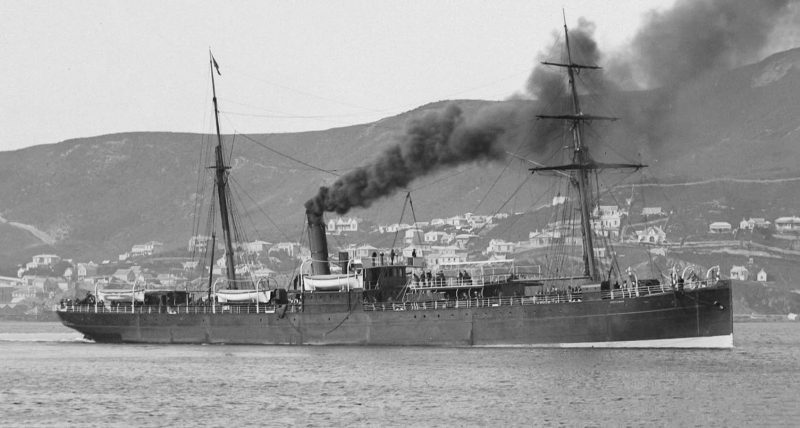
The first ship to operate to Noumea in July 1877 had been launched as Jackal of 438 grt for G. & J. Burns of Glasgow in 1875 by the Inglis yard at Glasgow, but was completed as Taiaora for the Albion Shipping Company of James Galbraith and ‘Paddy’ Henderson. The arrival of Taiaora at Dunedin caused consternation to James Mills of the USSNZ, and James Galbraith immediately offered to sell her to Mills and to refrain from coastal competition with USSNZ provided USSNZ became the feeders for the nineteen Albion vessels sailing from Dunedin. There was more to this move by Galbraith, as shipbuilder Peter Denny was on the Board of Directors of both companies, with much collusion as USSNZ continued to build ships with Denny for many years on agreed credit terms.
However, the mail and cargo service to Noumea from Sydney proved uneconomic, and USSNZ withdrew after only six months in favour of the Australian Steam Navigation Company. The Hull coaster Hero of 985 grt of the Thomas Wilson fleet had come out to Melbourne in 1873 when purchased by Bright Brothers & Company of Melbourne to operate collier services to the Pacific Islands in competition with USSNZ. The ‘Southern Octopus’ purchased her in 1880 to stop the competition, and she served in the same collier capacity to the Pacific Islands until hulked at Noumea in 1891 for the nickel industry on the island. The white hulled coaster Southern Cross of 262 grt completed at the South Shields yard of J. T. Eltringham in 1873 was purchased in 1881 by USSNZ and inaugurated the company service to Levuka on Ovalau Island on Fiji on 26th September 1881. However, she made only one voyage, and was replaced by larger coasters such as Fijian of 987 grt, Arawata of 1,096 grt, Janet Nicoll of 779 grt, Taviuni of 1,465 grt and passenger vessels such as Wairarapa of 1,786 grt, which also inaugurated the USSNZ ‘South Seas Islands’ cruising programme in 1884. The famous writer Robert Louis Stevenson (1850-1894) sailed on Janet Nicoll to Samoa, where he eventually settled due to ill health.
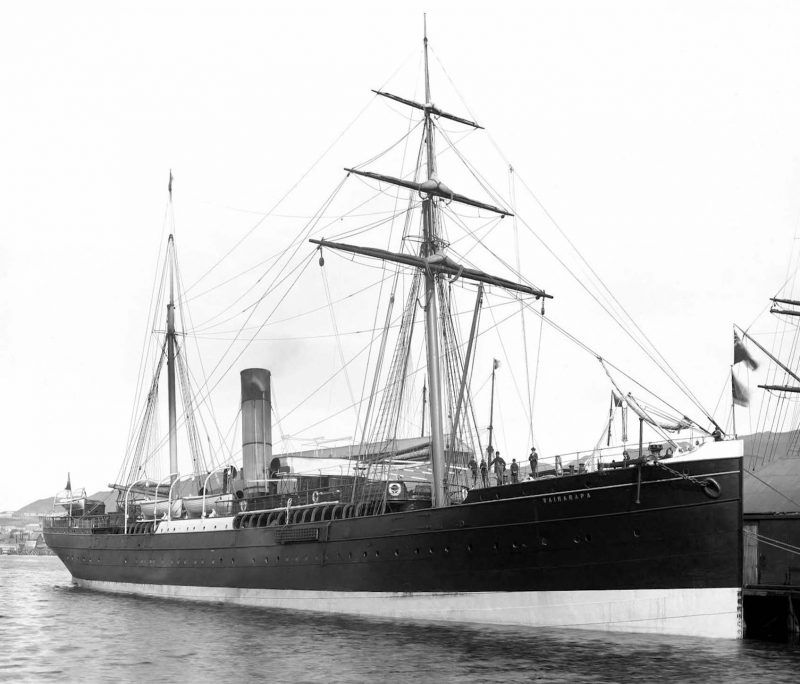
At Suva on Fiji, the Grand Pacific Hotel opened its doors in 1914 after completion for the USSNZ to serve the needs of its passengers travelling to Suva and those stopping over on its bigger passenger liners travelling to Vancouver and San Francisco. The hotel was known as ‘G.P.H.’ by the USSNZ passengers with staterooms that were the equivalent of staterooms on USSNZ passenger liners with saltwater bathrooms and plumbing identical to those found onboard the liners. The facade of the grand main entrance had a curved pediment to the top of several floors of the hotel, with a magnificent lobby greeting passengers on entry with a high arched roof. The Dining Room had tables laid with fine silver, china and flower vases, with views over the sea and the extensive lawns and grounds of the hotel, with tall palm trees across the wide sea vista. The ‘G.P.H.’ closed down in 1992 and was abandoned for twenty years, with some restoration begun in 2012.
Passengers arrived at Suva on the USSNZ Pacific islands steamer Tofua of 4,395 grt with accommodation for 101 passengers in two classes with a crew of 88. She was delivered by the Denny yard in January 1908, and sailed to New Zealand via the Cape, sustaining some damage in storms in the Indian Ocean. Apart from war service, she sailed to Suva and the other islands until the end of 1932. She was then used locally in New Zealand trades until withdrawn from service in April 1934 and sold for breaking up in Osaka. Tofua was named after the steep sided caldera of Tofua Island in the Ha’apai group of islands of Tonga.
A minority interest was taken in the Pacific Islands trading activities of Robert S. Lamb & Company of Sydney in 1909, which had a fleet of the steamer Inga and two trading schooners, Mary Isabel and Kongsbyrd, trading in the islands. The minority interest was converted into a full purchase of the remaining equity on 19th February 1930, together with the engines ‘midships steamers Gabriella of 1,587 grt, Kalingo of 2,047 grt and Omana of 2,550 grt, along with the new engines aft quarterdecker Kini of 1,388 grt, which sailed from the Aberdeen yard of John Lewis & Sons at the end of 1930 for Auckland. The last of these cargo ships employed to the South Seas islands were sold off to Chandris of Greece in 1952 and John Manners & Company of Hong Kong in 1956.
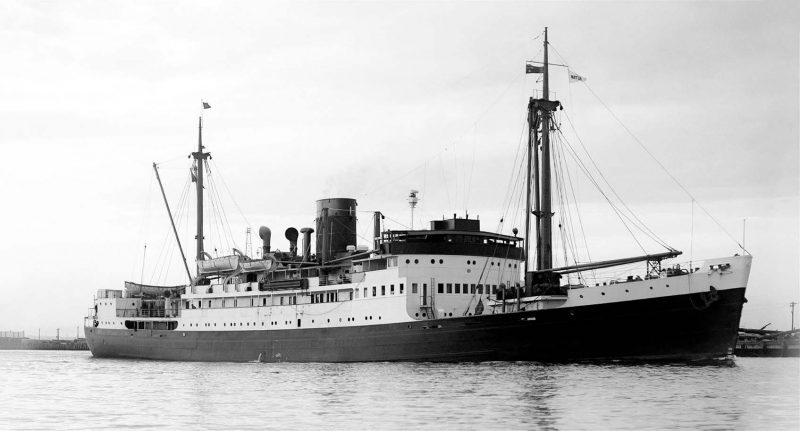
In June 1936, the South Seas island passenger vessel Matua of 4,193 grt with a white hull and green band and accommodation for 48 passengers (112 passengers in 1939 and 69 passengers in 1951) was completed for USSNZ by the Hebburn yard of Hawthorn, Leslie & Co. Ltd. on the Tyne. She was a twin screw motor vessel with a service speed of seventeen knots, with the twin six cylinder two stroke diesel engines completed at Newcastle by Armstrong, Whitworth & Company (Engineers) Ltd. She voyaged monthly to Suva from Auckland and on to Tonga, Rarotonga in the Cook Islands, and Apia on Samoa. She carried oranges, limes and other fruit homewards to Auckland, with oranges from Australia to New Zealand during the short Australian season. During World War II, she was presented with a plaque by the people of Fiji for continuing to serve the islands, carrying troops and supplies, but not civilians, as well as deck passengers between Nukualofa (‘Abode of Love’ in the native language) and Vavau in the Tongan groups of islands. Fiji sent over eight thousand locally recruited troops to fight the Japanese in the Solomons during the war in 1942/43.
Matua was given a green hull in 1946 and later that year evacuated the people of Niuafo’oa Island in the Tongan groups of islands to safety after huge volcanic eruptions meant the entire population of 1,258 people were in danger. The open lower deck above the two aft holds of Matua was plated over in 1960, and enabled her to survive the worst Pacific hurricane for thirty years in March 1963. She was hove-to to the west of Tofua after the hurricane warning was received while on passage from Suva to Nukualofa, with winds above 100 miles per hour and all passengers locked in their cabins. During the storm, her radio aerials and radio, starboard side deck fittings, bulwarks, accommodation ladders and the aft awning were all torn off and disappeared over the side of the ship. She managed to reach Apia on Samoa where temporary repairs were carried out. Matua was named after the Great Council of Chiefs that met on each of the Pacific islands that she served.
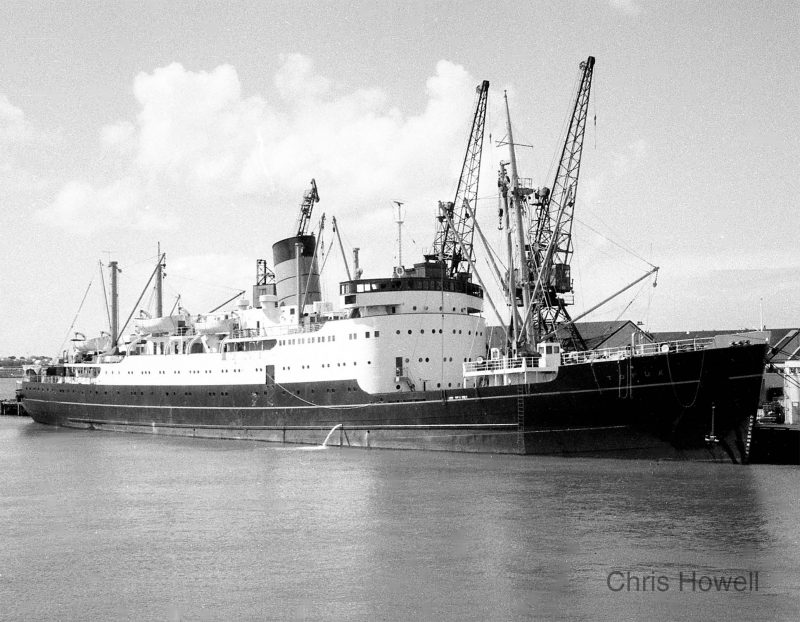
The passenger and cargo ship Tofua (2) of 5,299 grt was completed by Denny of Dumbarton to operate in conjunction with Matua in October 1951. She carried 73 First Class passengers and 200 deck passengers with a crew of 72 and was the 42nd and last ship built by Denny for the USSNZ. She achieved 18.19 knots on trials at 148 rpm from her twin seven cylinder two stroke diesel engines, adequate for her service speed of fifteen knots. She operated on an eighteen day round voyage schedule from Auckland to Suva, and became popular towards the end of her career by giving a touch of the exotic South Seas life to cruise passengers. She was left as the sole ship on the Fiji run when Tavenui was withdrawn at the end of 1972.
Matua was replaced by Tavenui in August 1968, a motorship built during World War II in Denmark for J. Lauritzen of Copenhagen as Argentinean Reefer of 2,826 grt. She was laid up at Aalborg and Copenhagen during the war and made her maiden voyage in July 1945 with food for the U.S. Army from Aalborg to Le Havre. She carried only fruit and general cargo homewards for USSNZ to Auckland, as passengers now travelled by the faster air service to Suva. She made her last voyage in December 1972 to the Pacific islands, and then loaded scrap metal at Gisborne on 30th December for Kaohsiung, where she was broken up. Tavenui was named after an island to the east of the island of Vanua Levu at Fiji and separated from this bigger island by the Somosomo Strait.
Fiji and Tonga became independent of Britain in 1970, and the South Pacific Islands services of USSNZ were then taken over in 1973 by a chartered twin funnelled ‘Tarros’ class container ship of 1,900 dwt and able to carry 120 TEU of containers, and renamed as Union South Pacific. At the end of her five year charter in 1978, USSNZ used chartered vessels until 1985. Union Nelson of 1,728 grt, chartered in 1981 for the Lyttelton to Onehunga run, was then purchased in 1985 and renamed Capricornia for the Suva and Tonga service, and flew the Tongan flag. She was renamed Polynesian Link by USSNZ in 1991 but while loading at Suva on 12th October 1991 she capsized onto her side and was cut up into sections where she lay. The South Sea islands trade was later taken over by French Caledonia shipping interests, among others.
The Pacific Service To San Francisco
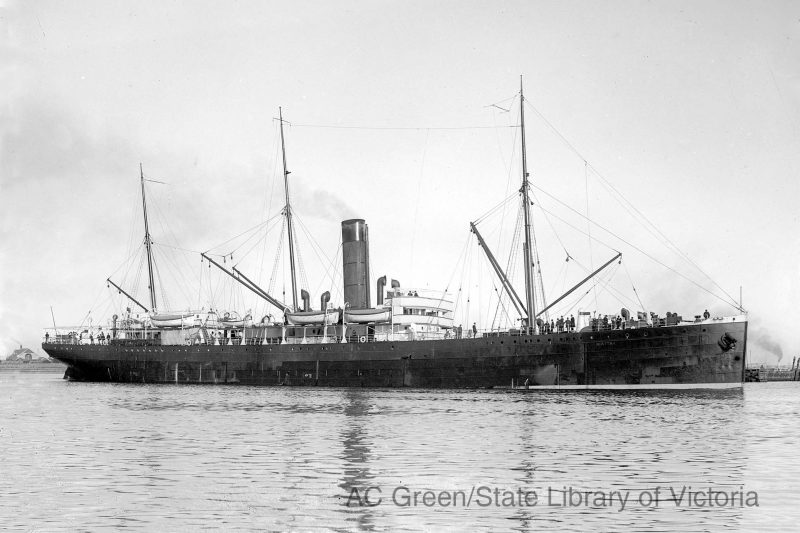
The Pacific Mail Steamship Company of San Francisco had begun a service to Australia in 1875 with a subsidy of £74,950 per year from the Government of New South Wales using five steamers with a service speed of 11 knots on the long Pacific route from San Francisco. Ten years later, the Spreckels family with sugar plantations in Hawaii, a refinery in California and the owner of the Oceanic Steamship Company, was awarded the mail subsidy of $150,000 per year ($29,000 from the American Government and the remainder from the New South Wales Government) for this service to Sydney. However, Oceanic had only two steamers, the sisters Alameda and Mariposa of 3,158 grt, to keep to the monthly schedule of 25 days from Sydney and twenty days from Auckland to San Francisco. USSNZ was then invited to provide a third vessel, Mararoa of 2,598 grt, and she was completed by Denny during 1885 and then arrived in New Zealand waters in November of that year.
Mararoa sailed from Sydney on 3rd December 1885 to great celebrations from onlookers and arrived in San Francisco on 29th December after a two day delay caused by a broken piston. She was the first triple expansion powered liner into San Francisco, and the Marine Engineers Society presented her with three brass eagles which were carried on the engine tail rods for the remainder of her career. She was fitted with electric light with electric bell signals from every cabin to the steward’s quarters. She was built of steel and could accommodate 150 First class and 120 Second class passengers and had a crew of 74.
Mararoa carried only 49 passengers on her first sailing from Sydney to San Francisco and was withdrawn by USSNZ towards the end of 1886, with Oceanic Steamship Company then using their newly purchased steamer Australia for the next voyage and their steamer Zealandia as the permanent third ship until USSNZ re-entered the service in 1890. The new Monowai of 3,433 grt had been completed by Denny for USSNZ on 4th April 1890 and had then steamed the 13,524 miles from the Clyde to Port Chalmers without stopping for coal. She was the finest ship on the San Francisco service with accommodation for 132 First class and 96 Second class passengers with a crew of 99. She sailed from Sydney on the same day in December 1890 as Oceanic’s Zealandia, with the patriotic Australian Post Office having given her the mails in preference to Zealandia. However, since Monowai carried enough coal for the return voyage from San Francisco as well as the outward voyage, she arrived 18 hours later than Zealandia at San Francisco. George McLean, Chairman of USSNZ, had conferred with J. H. Spreckels of Oceanic on this maiden voyage and had assured him that the New Zealand Government would guarantee a satisfactory subsidy for three years.
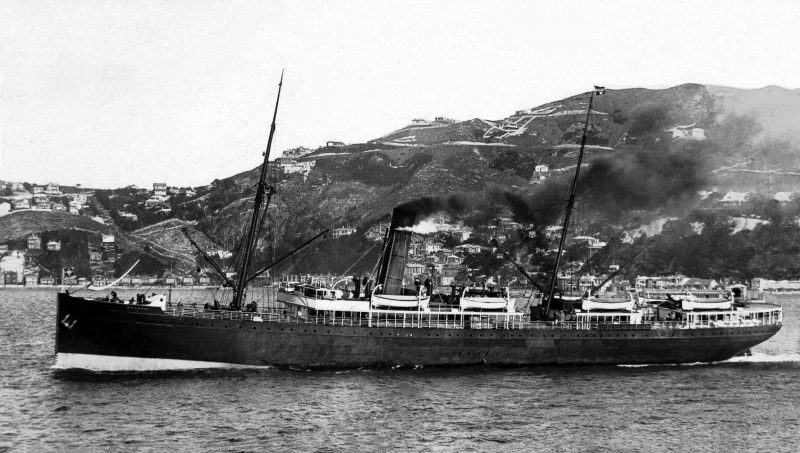
Monowai sailed from San Francisco for the first time on 8th February 1891 as the third steamer on the route, and she made her fastest passage on the route in 1894 with London mail that had crossed the Atlantic and the U.S.A. and then the Pacific arriving in Auckland in a record 31 days from London. Monowai was equipped with a refrigerator to keep food cool in the tropics and when crossing the equator, and had carried 88 passengers and 1,500 tons of cargo on her maiden voyage south from San Francisco. She remained on the run until 1897 except for missing a single voyage in 1895 when she replaced the lost Wairarapa of 1,786 grt on the USSNZ service from Sydney to Auckland. The Shaw, Savill & Albion Co. Ltd. steamer Arawa was chartered for a single voyage and she made a fast time of 23 days from Sydney to San Francisco.
In May 1897, the new USSNZ steamer Moana of 3,915 grt, completed by Denny at a cost of £88,243, arrived in New Zealand waters to take over the Trans-Pacific service from Monowai. Moana continued on the run for three years until an American law forbidding foreign flag vessels from trading between American ports was applied to Hawaii and California, and thus Moana could no longer call at Honolulu. Moana had accommodation for 180 First class and 116 Second class passengers with a crew of 109, with First class in two and four berth cabins and Second class in three berth cabins with two extra sofa bunks per cabin. The First Class saloon had a piano and an organ for entertainment, and there was also a piano in the Music Room. The First Class cabins and public rooms were cooled by forced air draft systems, and her derricks serving her holds were unusual in that they were of lattice work design. Moana was then transferred to the ‘All-Red’ route from Sydney and Auckland to Vancouver in the following year of 1901.
USSNZ re-entered the route in 1910, but this time the service to San Francisco was to be from Wellington and Auckland via Rarotonga in the Cook Islands and Tahiti. Miowera had been purchased by USSNZ in 1908 and renamed Maitai for Trans-Tasman service, and was then advertised in November and December 1910 to sail alternately with Aorangi from San Francisco on a four weekly frequency to Wellington. A much larger and newer liner was then purchased for the service from the Imperial Direct West India Mail Service Company run by Elder, Dempster for the passenger and banana trade from Jamaica to Avonmouth. This was Port Kingston of 7,585 grt completed in 1904 by the Stephen yard on the Clyde but had proven too large for the trade, and this unprofitable run ceased when the mail contract ran out and was taken over by Elders & Fyffes Ltd.
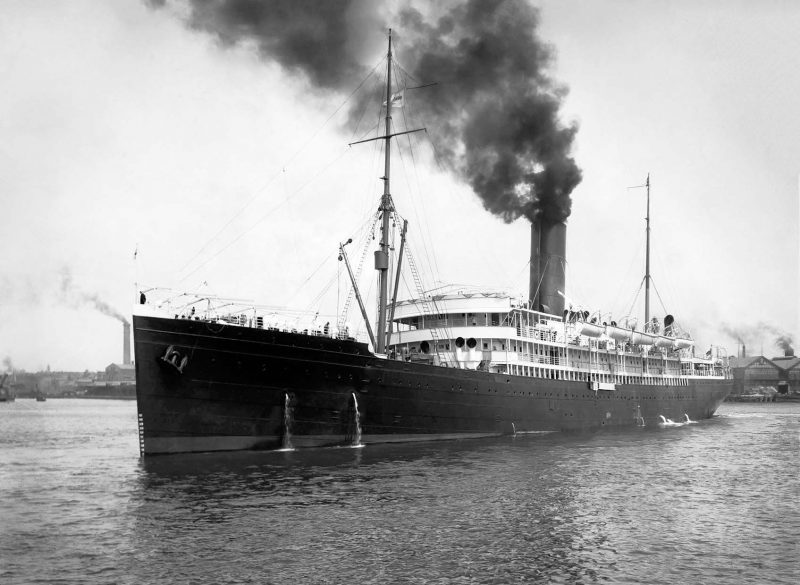
Port Kingston was renamed Tahiti by USSNZ after an extensive refit which altered her appearance considerably and doubled her passenger capacity to 277 in First class and 141 in Third class. Maitai sailed from New Zealand on 11th January 1911, with the next sailing taken by Tahiti to San Francisco, making possible the extension of the service to Sydney and temporarily replacing Maitai. After Manuka of 1903 made one voyage, Moana of 1897 was allocated to work with Tahiti and Aorangi until the latter pair were taken up for war service in 1914. Marama of 1907, Maitai, and Moana then sailed on the San Francisco service until Marama became a hospital ship in 1915. Unfortunately, Maitai was wrecked in the harbour of Rarotonga on Christmas Day 1916 when severe gale force winds dragged both of her anchors and she was driven onto Avarua reef and became a total loss. Moana then ran the service alone until the cargo ship Wairuna left Wellington late in May 1917 for Rarotonga with a dozen passengers. However, on 2nd June while off Raoul Island in the Kermadecs to the north of New Zealand, Wairuna was spotted by a seaplane from the German raider Wolf and order to steam at slow speed towards the island. Wairuna destroyed her documents before being captured and taken to Sunday Island, where 1,500 tons of coal and much needed food was transferred to the raider over a twelve day period. Wairuna was then sunk out at sea on 17th June, and Wolf went on to lay mines off New Zealand and Australia.
Moana continued the San Francisco service more or less alone every two months until the end of the war. In July 1920, USSNZ re-entered the service with a sailing by Marama of 1907. The Trans-Tasman steamer Maunganui of 7,527 grt and completed by the Fairfield yard in 1911, was then transferred to the route early in 1921 after a two year refit and conversion to oil burning. She also served on the Trans-Tasman route again and once to Vancouver on the ‘All-Red’ route in 1927. Tahiti also returned in 1921 after a post-war refit and worked the route with Maunganui between 1921 and 1928 and again in 1930. However, on 15th August 1930, en route from Wellington to Rarotonga the starboard propeller shaft snapped 460 miles from her destination. The engine was unseated and tore a mortal blow in the stern hull plating. Pumps at first coped with the flow until they were submerged and power was lost. The crew bailed out the water with forty gallon oil drums for sixty hours until three ships including the USSNZ Pacific island steamer Tofua came to her aid and transferred her 103 passengers and 149 crew and all of their baggage. She finally sank slowly by the stern towards the end of 17th August, with Capt. Toten the last man to leave the ship.
Makura of 1908 was withdrawn from the ‘All-Red’ service in early 1925 after Aorangi (2) had entered service, and after a refit and conversion to oil burning was transferred to the San Francisco service to work with Tahiti and Maunganui in a three ship service. After the loss of Tahiti, a three ship service was resumed by purchasing the twin funnelled P. & O. liner Razmak of 10,852 grt and completed at Greenock in 1925 and renaming her Monowai (2). However, the Depression years proved too much for the San Francisco service, with Monowai (2) withdrawn in 1932. In February 1936, USSNZ asked the Governments served by the service across the Pacific for a subsidy in order to compete with Matson Line but this was not forthcoming. Maunganui made her last sailing on the route on 21st October 1936, with Makura of 1908 closing out the passenger service in mid November 1936 from San Francisco, and on arrival at Sydney she was sold for breaking up at Shanghai.
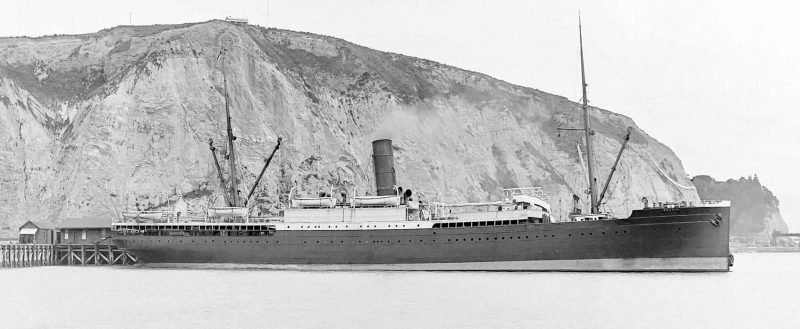
A USSNZ Trans Pacific cargo service from Auckland to San Francisco ran for over sixty years using ‘W’ class shelterdeckers calling at Tahiti, Samoa and Fiji, starting with Wairuna of 6,000 dwt in October 1905 on purchase, after completion in 1904 as Lady Strathcona on the Tyne for W. Paterson Ltd. of Newcastle. Wairuna ran with the Clyde built Waitemata of April 1908, which undertook a voyage on charter to Shaw, Savill & Albion in 1910 with wood and tallow to Glasgow from Auckland via the Horn. She then returned via the Horn to Vancouver and San Francisco to load 1,200 mules on charter to the Colonial Sugar Refining Company for use in the plantations on Fiji. Wairuna and Waitemata both became war losses during World War I, Waitemata to submarine UB105 in the Mediterranean after requisition.

Three standard ‘F1’ cargo ships of 9,000 dwt were purchased from the British Government in 1919 after completion at the Howdon yard of the Northumberland Shipbuilding Co. Ltd. on the Tyne, which built all of the ships of this design. Waitemata (2), Waikawa and Waihemo ran across the Pacific to San Francisco until sold to Australian, British and Greek owners in the middle of the Depression when cargoes were hard to find. The double bottom tanks of this trio were useful in carrying fuel oil from San Francisco to Wellington and Sydney before tankers were in use across the Pacific. The Trans Pacific service continued with other ‘W’ class shelterdeckers, including Wairuna (2), a German prize ship completed as Schneefels for Hansa Line in 1914. A Canadian built standard ship of 10,000 grt was acquired at her Burrard of Vancouver building yard in April 1946 and renamed Waitemata (3). She had been launched as an armaments maintenance ship for the Royal Navy, but had been laid up, with Burrard converting her for commercial use. The black hulls of the ‘W’ class cargo ships on the Trans Pacific service were changed to the bronze green of their fleetmates on the passenger service in 1950. Waitemata (3) ran for twenty years from San Francisco to Auckland, and closed out the USSNZ Trans Pacific cargo service on 15th April 1967 when she sailed from San Francisco for the last time.
Trans-Tasman Services
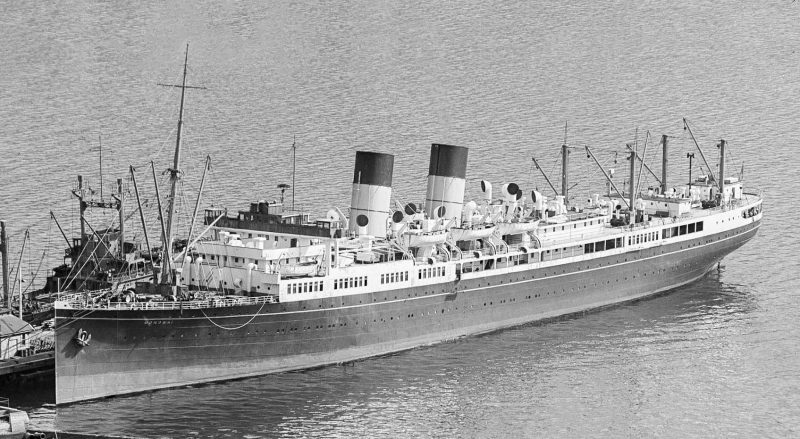
The Tasman Sea was the stronghold of the USSNZ, but only after its main rivals were either taken over during periods of intense competition, or agreements were made to run joint services. After rate wars for a number of years from 1892, a joint passenger service was then operated by USSNZ and Huddart, Parker Ltd. of Melbourne. The first passenger service across the Tasman had begun in 1876 using the managed Wakatipu of 1,797 grt with accommodation for 95 passengers in two classes and a large cargo capacity for coal from Newcastle (NSW) to New Zealand ports. Wakatipu was owned by a friendly syndicate that included James Mills, but the new Rotorua of 926 grt was completed in 1876 by Denny for USSNZ for a service from Port Chalmers to Onehunga and Sydney. Rotorua had accommodation for 135 passengers in two classes, and the great days of the USSNZ passenger and cargo trade had then really begun.
In November 1878, the main Trans Tasman shipping line of McMeckan, Blackwood & Company of Melbourne, which traded as the Blue Emu Line from Melbourne to New Zealand ports including Wellington, was taken over with four ships. The USSNZ fleet stood at 15 ships in 1879 with 7 new ships then delivered over the next three years for the Trans Tasman route, including Rotomahana of 1,727 grt with her clipper bow and bowsprit. She was a very beautiful Denny built ship and became one of the best loved ships on the Trans Tasman service with accommodation for 195 First class passengers and 105 in Second class with a crew of 53. She was the largest mild steel ship yet built and the first to be fitted with bilge keels, and also the first ship in the Pacific to have steam steering gear. During her delivery voyage she cruised from various ports to show herself off, and unfortunately hit a rock off the Great Barrier Reef. One plate was dented and a few rivets were started, but had she been built of iron the smashed plate would have resulted in her loss, and she was only out of service for three days. The first class saloon was roomy and warm and helped to keep her in service on the Trans Tasman service until 1899. Rotomahana was known as the ‘Greyhound of the Tasman’ with a service speed of 15 knots, but was expensive to build at £58,250, and the smaller and cheaper Te Anau of 1,652 grt from Denny in the same year made more profit than her.
The first USSNZ vessel to be lost on Trans Tasman service was Tararua of 828 grt on 30th April 1881 while on a voyage from Port Chalmers to Melbourne. She was wrecked on an uncharted rock at Waipapa Point, Southland with the loss of 131 lives although 20 people survived. The Trans Tasman fleet had gained another vessel during 1880, this was Hero of 985 grt and purchased by James Mills from a Melbourne owner. She was used to ship locally grown oats from the Dunedin and Port Chalmers areas to be sold at a good profit at Melbourne over the next decade.
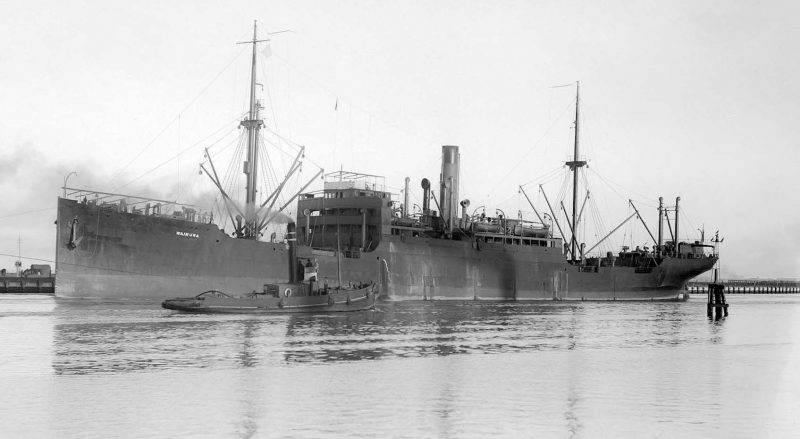
During 1882/83, the famous ‘Horseshoe’ service across the Tasman was begun by the USSNZ. The new steamers Hauroto, Tarawera (2) and Waihora sailed from Port Chalmers and New Zealand ports to Sydney, bunkering at Opua near the north tip of North Island, returning to New Zealand ports including Port Chalmers, and then on to Melbourne before doubling back to Port Chalmers. The trio carried 144 passengers in two classes, with Tarawera (2) as the first British ship to be fitted with ‘Edison’s incandescent light’. The trio still carried yards on the foremast for sails to be hoisted in case their compound steam engines broke down. They were altered in appearance around 1900 and given more accommodation, and then transferred to other USSNZ services, such as the coastal Sydney to Hobart and the Wellington to Lyttelton services. At the end of 1886, Mararoa of 2,598 grt with accommodation for 270 passengers in two classes, joined the route after she had become the first USSNZ steamer on the San Francisco run when completed in the previous year. Similarly, Monowai of 3,433 grt and accommodation for 228 passengers in two classes, served on the San Francisco route from new in 1890 until transferred to Trans Tasman service in 1897.
Towards the end of 1892, James Huddart established a Trans Tasman company as the New Zealand & Australasian Steamship Company. USSNZ retaliated by placing some of their best ships on the route together with a rate war that forced Huddart to withdraw after a few months. However, Huddart, Parker Ltd., formed on 1st August 1876 in Geelong by James Huddart and three partners, re-entered the route in November 1893 using the new steamer Tasmania of 2,252 grt. An intense period of rate wars by the two competitors over the next seven years, led to an agreement for a joint passenger service, although their marketing was separate and aggressive to attract their own customers.
Manapouri and her sister Wairarapa of 1,786 grt had been completed by Denny in 1882 for the service from Auckland to Sydney. They had accommodation for 253 passengers in First and Second class, but many more in the ‘tween decks in Third Class. Unfortunately, Wairarapa was lost on 28th October 1894 four days after sailing from Sydney for Auckland. She ran aground at midnight on Great Barrier Island with her bow hard against the cliffs at Miner’s Head shortly after rounding the tip of North Island with fog and storms causing poor visibility. Capt. John S. McIntosh had kept her speed up to her maximum of 13 knots, however, and Wairarapa had skirted to the west of the Poor Knights Islands off Matapouri, not the east, and as a consequence was much closer to the mainland. The following hours saw a great loss of life, many passengers could not swim and drowned in the rough seas in trying to make it ashore. One liferaft floated out to sea and was never seen again, but another lifeboat eventually succeeded in reaching a small community at Katherine Bay on the west coast of the island. There were 119 survivors but 58 passengers and 21 crew lost their lives, and the Court of Enquiry found that the actions of her Master were the primary cause of the tragedy.
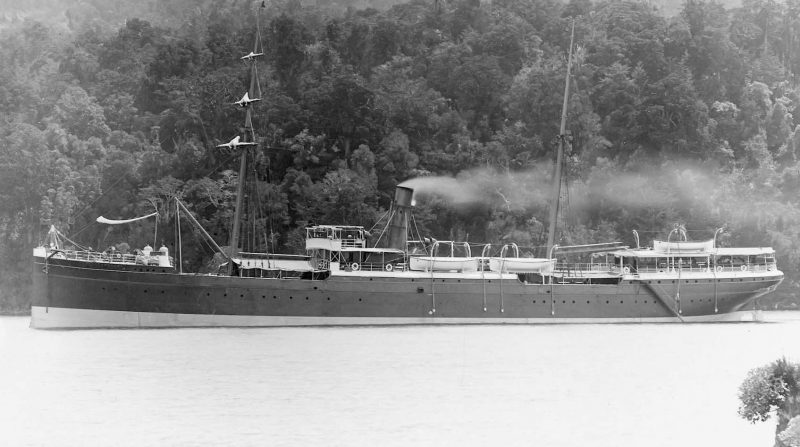
In the late 1890s, the famous USSNZ ‘Horseshoe’ route across the Tasman was upgraded by steamers that included Waikare, Monowai, Mokoia and Moana. The latter ship was of 3,915 grt with accommodation for 296 passengers in two classes, and after three years service on the San Francisco run was transferred to the Tasman service in 1900. Waikare of 3,071 grt had also been completed in 1897 with accommodation for 326 passengers in two classes. During the high season, she could also accommodate extra passengers berthed in the Smoking Room, Music Room and in the Saloon, and for this reason she had two extra folding Berthon type lifeboats, and all of her second class passengers were in five berth cabins. She ran across the Tasman from 1897, replacing Mararoa, until she was lost on a summer cruise out of Dunedin in 1910. Mokoia of 3,502 grt was completed by Denny in 1898 with accommodation for 336 passengers in two classes and a crew of 91. She had a long combined bridge and poop deck of length 240 feet with the usual layout of cabins and passenger saloon, but also a special saloon for servants and children under the second lifeboat. She served for ten years on the Trans Tasman service until transferred to New Zealand coastal service in 1908.
Huddart, Parker Ltd. introduced their larger liner Ulimaroa of 5,777 grt in 1908 to the Tasman service after her delivery voyage from the Dundee yard of Gourlay Brothers. USSNZ had placed their newest and best liner, Marama of 6,437 grt, on the route at the beginning of 1908 to join their sisters Moeraki and Manuka of 4,392 grt with accommodation for 356 passengers in two classes and in service since 1903. This quartet and other smaller steamers such as Warrimoo and Maitai operated a joint USSNZ/Huddart service until the delivery of Maunganui of 7,527 grt to USSNZ from the Fairfield yard in February 1912. She replaced Warrimoo and had accommodation for 244 in First class, 175 in Second class, and 80 in Third class with a crew of 104. She was twin screw powered by two quadruple expansion steam engines by the builder giving a service speed of 17 knots.
On the outbreak of the Great War, Monowai and Moeraki were the first of the Trans Tasman fleet to be taken up for trooping, with Maunganui following shortly afterwards and Marama and Maheno becoming hospital ships. After the war, Maunganui was completely overhauled during 1919/20 and changed to oil firing, which actually delayed her entry into the San Francisco service. She was ready in the Autumn of 1920 but there was a severe shortage of oil in New Zealand and she did not sail until early in 1921. The Trans Tasman passenger service was operated during the 1920s by Moeraki and Manuka of USSNZ, and Ulimaroa of Huddart, Parker Ltd. on their joint service. During 1930/32, the rivals upgraded the passenger service with two bigger twin funnelled liners, Monowai (2) of 10,852 grt with accommodation for 484 passengers for USSNZ in 1930 when purchased from P. & O. as Razmak, and the new Wanganella of 9,876 grt with accommodation for 400 passengers in 1932 for Huddart, Parker Ltd.
The twin funnelled fast Parsons turbine powered liner Awatea of 13,482 grt, her Maori name meant ‘Eye of the Dawn’, made her entry on the USSNZ Trans-Tasman service from Queen’s Wharf at Wellington to Sydney on 15th September 1936. She gained the speed record of reaching New Zealand via Panama on her delivery voyage, and held the speed record for Auckland to Sydney of 23 knots. She operated from Wellington and Auckland on alternate voyages to Sydney. The concept of Awatea owed a lot to the new Chairman of USSNZ, Norris S. Falla, who had been appointed after the death of the founder Sir James Mills in 1936. She was twin screw and powered by two sets of three Parsons steam turbines to give a service speed of 23 knots and a top speed of 24.5 knots, and was the third fastest British liner at the time after the two Cunard ‘Queens’.
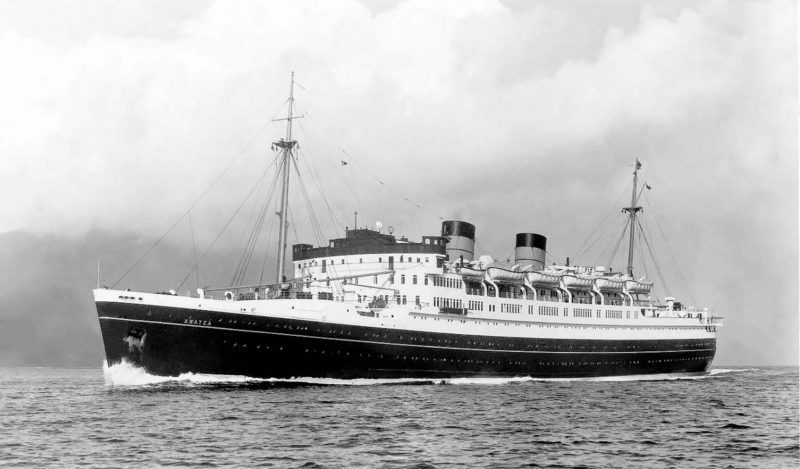
Awatea reached Australia in only two and one half days from New Zealand, and after her machinery was fully ‘run-in’, she regularly steamed at 23.5 knots across the Tasman. She had accommodation for 377 passengers in First class, 151 in Tourist class, and 38 steerage passengers and a crew of 204. Capt. A.H. Davey was in command from her delivery at the Barrow yard of Vickers-Armstrong Ltd. and he made 241 voyages as her Master on the Tasman until her arrival at Sydney on 22nd August 1939, when she was taken up for war service. She made six voyages Trans Pacific during 1940/41 from Sydney to Vancouver with Australasian airmen for training in Canada, but this beautiful liner was unfortunately sunk by bombers on 11th November 1942 off North Africa during Operation Torch.
Monowai (2) was returned to USSNZ from wartime troopship duty in September 1946 and was then modernized and rebuilt at Sydney over the next two years with two new wider funnels and better accommodation and public rooms for 181 First class passengers and 205 in Tourist class. She returned to Trans Tasman service on 19th January 1949 to partner Wanganella of Huddart, Parker Ltd., which had served as a hospital ship during the war and returned to Trans Tasman service in January 1947. Unfortunately on her first voyage, Wanganella ran aground on the Barrett reef at the entrance to Wellington harbour and remained there for seventeen days. After being salvaged, the repair work lasted almost two years and it was not until December 1948 that she was back in service.
Unfortunately, the Trans Tasman passenger service became an early victim of air competition by the late 1950s, and Monowai (2) made her last voyage from Sydney and arrived at Auckland on 31st May 1960. The ‘Grand Old Lady of the Tasman’ arrived at Hong Kong for scrapping on 13th September 1960. Huddart, Parker Ltd. ended their Trans Tasman passenger service in 1961, and Wanganella was sold to McIlwraith, McEachearn of Australia to continue across the Tasman for another year. In July 1963, she became a worker’s hostel at Doubtful Sound in the South Island of New Zealand for seven years until her arrival at Kaohsiung for scrapping on 5th June 1970.
The USSNZ Trans Tasman cargo service continued in post war years using the twenty ‘K’ class built by the Henry Robb Ltd. yard at Leith in two variants, the ‘AE’ type of 5,000 dwt and the ‘AC’ type of 3,100 dwt. Paper pulp cargoes from Tauranga to Australia were a mainstay of the trade, with the four vessels Ngahere, Ngakuta, Ngapara and Ngatoro of 6,000 dwt from the Caledon yard at Dundee delivered between 1962 and 1966 for the trade. Poolta was built as a general cargo ship at Leith in 1959 but was lengthened and converted at Hong Kong in 1968 for the carriage of newsprint and 85 containers from the Boyer Mill of Australian Newsprint Mills located 33 kilometres northwest of Hobart.
The pulp trade was converted to a ro-ro service in 1969 with the entry into service of Maheno (2) and Marama (2) of 6,033 dwt from the Henry Robb Ltd. yard at Dundee. At the time, their 1,300 mile crossing was the longest ro-ro service in the world, with Marama (2) continuing in service until August 1984. Two pulp carriers were managed for the Tasman Pulp and Paper Co. Ltd. of Tauranga from 1977 as Tasman Enterprise and Tasman Venture of 5,578 grt and built by the Kagoshima Dockyard and equipped with two cranes and two side ports to handle pulp cargoes into their two holds.
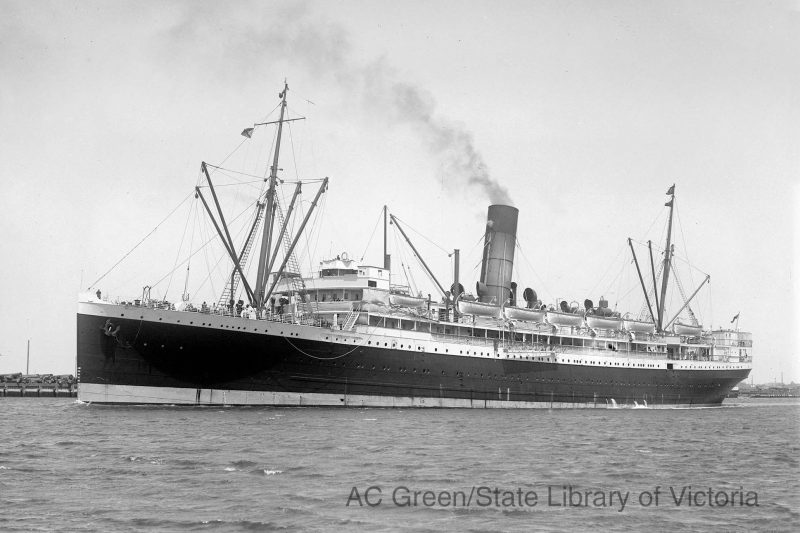
On 1st January 1972, the USSNZ was acquired by Tasman Union Ltd., a consortium of the TNT Group (Thomas Nationwide Transport) of Australia and P. & O. for $22.192 million, and the fleet nomenclature was changed to have a ‘Union’ prefix. Owned ships manned by USSNZ crews were given Maori suffixes e.g. Union Rotoiti, whereas chartered ships were given place name suffixes e.g. the bulker Union Auckland. USSNZ celebrated its centenary at its headquarters at Union House in Auckland on 1st July 1975, with a fleet of 32 ships of over twice the carrying capacity of the 75 ships owned in 1925. The Trans Tasman forestry and other trades were taken over by the chartered general cargo ships Union New Zealand, Union Australia and Union Transtasman, together with the chartered ro-ros Union Sydney (ex Leena Dan), Union Wellington (ex Stena Shipper), Union Hobart, Union Lyttelton and Union Melbourne.
However, the fleet had been reduced to 13 ships in 1987, and 9 ships in 1992, when ship management, tourism, real estate and other ventures had become the main businesses. In December 1996, Brierley Investments purchased the remaining 50% in USSNZ from TNT of Australia, Brierley having owned the other half of the shares of USSNZ since 1987. A month later, Brierley Investments sold 50% of USSNZ to the Bollore Group of France, the parent company of Australia New Zealand Direct Line (ANZDL).
There were only three USSNZ ro-ro vessels in 1997 in Union Rotoiti, Union Rotoma and Union Rotorua plus three managed vessels. The sale of their last vessel, Union Rotoma, on 30th September 1999 to ANZDL ended its 123 year association with Trans Tasman shipping. Union Shipping New Zealand had been formed in 1988 as part of the Union Shipping Group Ltd. with TNT as the parent company, and Union Maritime Services Ltd. as ships’ agents and Union Stevedoring and Wharfingering Co. Ltd. as stevedores. Union Shipping Bulk was formed in 1998 to ship coal around the New Zealand coasts in the barge Union Bulk I (ex Hawaii) based at Westport towed by the tug Karamea 557/78, and this continued to trade until Millennium year.
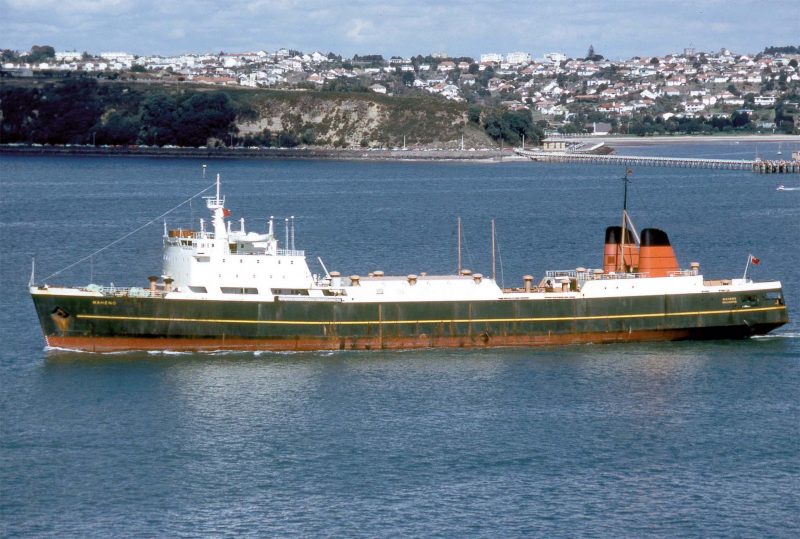
Postscript
The Union Steamship Company participated in several other trades other than those outlined in these two articles. A scheduled trade was that to Calcutta via Java and Sumatra with coal, returning with wheat, tapioca, rice, barley, corn, millet, sorghum, potatoes, cassava, tea, jute, chick peas and other general cargoes. The Indo Pacific Shipping Co. Ltd. was formed in 1929 to operate services to and from India to Australian, New Zealand and Pacific ports served by the USSNZ. This gave the USSNZ access to the Far East Freight Conference (FEFC) in a very limited way, and only a very few larger cargo ships were used by the USSNZ to India. A 25% equity was given to USSNZ in late 1946 by P. & O. to manage and develop the Australia to South East Asia business of the Eastern and Australian Steamship Company, which had three wartime steamers of 10,000 dwt at this time. The motor cargo vessel Arafura of 10,725 dwt was completed in 1954 by the Barclay, Curle yard on the Clyde for this trade. The USSNZ manned and chartered general cargo vessel Union Aotearoa of 12,825 dwt ran for five years during 1973/78 from New Zealand and Australian ports to Singapore on a joint service with KPM of Holland.
The USSNZ purchased the Miramar oil depot at Wellington in 1923 to give it an entry into the oil industry using the steam tanker Orowaiti of 9,000 dwt. She arrived at Wellington on 3rd July 1923 with her first cargo of oil, but unfortunately she was wrecked on Point Sal close to her destination of San Luis Obispo in California during the following year while on a voyage from Wellington to load more oil. Chartered Shell and BP tankers were then used In post war years, USSNZ had a fleet of up to five chartered tankers moving crude oil to the Marsden Point oil refinery at Whangarei to the north of Auckland, which opened in 1954, and refined products to Wellington. The tankers included Amokura of 32,240 dwt completed in September 1976 by the Readhead yard at South Shields as Hindustan for Common Brothers of Newcastle, sisters Kuaka, Kotuku of 25,500 dwt from the Eriksberg yard at Gothenburg in 1975, and the chartered Erne of 20,090 dwt from P. & O. Taiko of 33,375 dwt was completed in 1984 and was managed for USSNZ by Silver Fern Shipping Ltd. of Hong Kong. They carried cargoes of crude or refined oil throughout the 1980s and 1990s until Kotuku and Kuaka were the last tankers moving crude and refined oil in the late 1990s for USSNZ, with the last of this pair of sisters sold off in 1998.
The USSNZ became the biggest maritime organisation in the southern hemisphere, including the ports of New Zealand, Australia and the Pacific islands as far east as Tahiti. It participated in many trades during the 125 years of its existence, including the dairy, meat, fish and timber industries, along with lesser amounts of wine and mineral ores. The fleet had mostly Maori or Australian aboriginal names, which although unfamiliar to most people not from the Antipodes, were the defining and memorable part of this captivating shipping company of New Zealand and the South Pacific. Lambton harbour at Wellington, or Port Nicholson as it was originally known, was an important ferry port for USSNZ, and has been developed since the demise of USSNZ with container terminals and cargo piers near Waitangi Park.
The Queen’s Wharf and Bluebridge ferry terminals, and the International Ferry Terminal further away, are accessed from the Jervois Quay and Waterloo Quay ring roads.
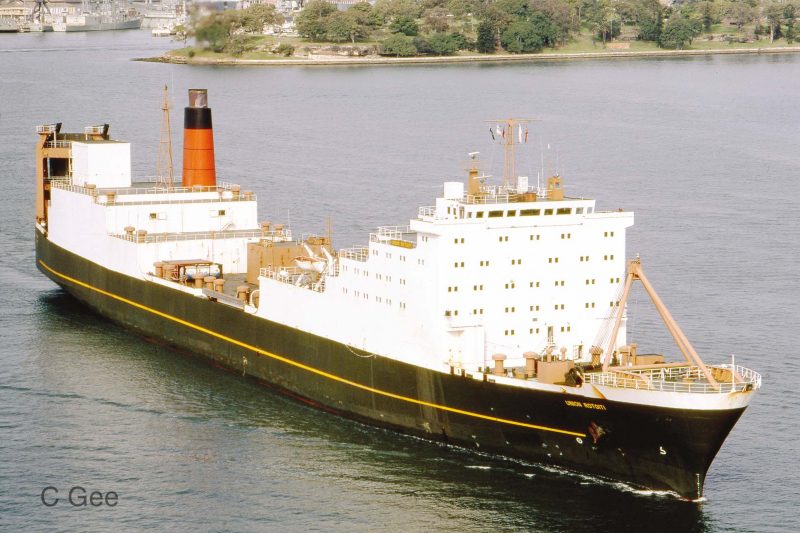

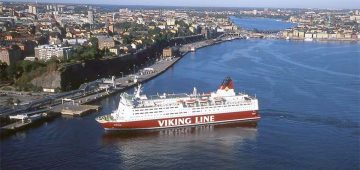



Comments
Sorry, comments are closed for this item